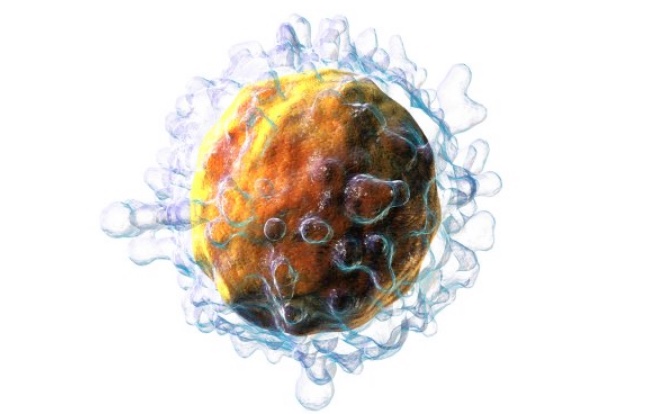Although depleting naïve T cells has been successful in preventing acute graft vs host disease in several studies, investigators from Spain reported an unexpectedly high incidence of HHV-6 encephalitis in a cohort of haploidentical transplant patients. There was an association between “pre-engraftment immune reaction” and the onset of encephalitis.
The group studied 25 high-risk pediatric (age 2-17 years) hematopoietic stem cell transplant (HCT) recipients and 8 (32%) developed HHV-6 encephalitis, which is far higher than previously reported rates in cord blood recipients (~8%) and non-cord blood allogeneic stem cell recipients (~1%) (Scheurer 2013, Ogata 2013, Hill 2012).
Four centers in Spain participated in this study and only pediatric patients with high-risk hematological malignancies requiring allogeneic transplantation and lacking an HLA-matched donor were enrolled. In the past, in vivo and ex vivo T cell-depleted grafts have been utilized as a transplant strategy to avoid graft-versus-host disease (GVHD), a major burden in the HCT setting. However, these methods are associated with a high rate of graft failure, delayed immune reconstitution and opportunistic infections.
In an effort to circumvent these adverse events, the Spanish investigators employed a novel, partial T cell depletion strategy involving the depletion of naïve T cells (CD45RA+ T cells), which are thought to be responsible for GVHD, while preserving memory T cells that can reduce leukemia, infection, and rejection. All patients achieved neutrophil engraftment by day +18 post-transplant (median day +10), though 2 patients required a second HCT. Three patients (12%) relapsed and they subsequently died due to disease progression; however, given that 2 of these patients had active disease prior to transplant, this was deemed an acceptable relapse rate by the authors. Eight patients (32%) received preemptive antiviral treatment for CMV reactivation, although none progressed to CMV disease. One patient developed adenovirus viremia and hemorrhagic cystitis secondary to BK polyomavirus infection. Overall, this transplant strategy seemed to be effective in controlling viral infections besides HHV-6B, which is not surprising since HHV-6B resides in CD4+ T cells (Phan 2018a).
HHV-6 encephalitis developed in 8 patients with a median onset of 35 days (range 13-56 days). HHV-6 encephalitis was diagnosed via detection of HHV-6 DNA in CSF in 7/8 patients and all 8 cases were caused by HHV-6B. The clinical progression of encephalitis followed a similar pattern in almost every case, beginning with “pre-engraftment syndrome” (fluid retention, erythematous rash, fever) followed by neurological symptoms. Three of these 8 patients received foscarnet, 1 received ganciclovir and 4 received a combination of foscarnet and ganciclovir. None of the patients died directly from HHV-6 encephalitis, although 1 patient suffered neurological sequelae and hyponatremia 1.5 years post-infection. One other patient had detectable levels of HHV-6 DNA in blood and suffered 3 consecutive episodes of seizure. This patient did not exhibit signs of encephalitis on MRI but ultimately developed secondary graft failure just after HHV-6 reactivation and required a second HCT. Interestingly, 7 of the patients who reactivated HHV-6 originated from outside Spain. Whether there is a genetic component involved remains to be determined.
Thirteen patients (52%) developed acute GVHD, with a 39% cumulative incidence of grade 2-4 aGVHD, which falls in line with past studies. HHV-6B reactivation has been associated with a 3-fold increase in subsequent grade 2-4 aGVHD after HCT (Phan 2018b).
Overall, the authors concluded that CD45RA+ T cell-depleted allogeneic transplantation is a feasible method with high rates of engraftment and moderate risk for GVHD. They did note that there was a greatly increased risk of HHV-6 encephalitis for unknown reasons and that strict control of HHV-6 infection through preemptive treatment may be necessary for this particular transplant strategy.
Read the paper here: Sisinni 2018.

